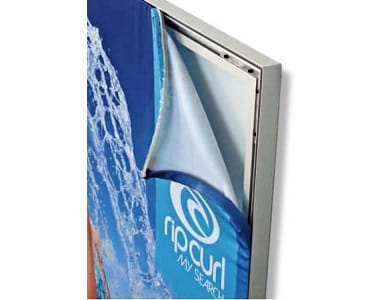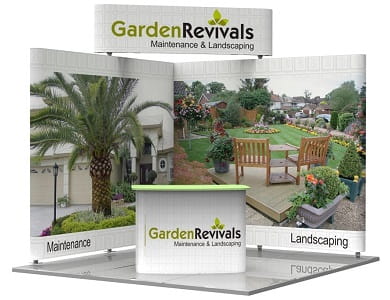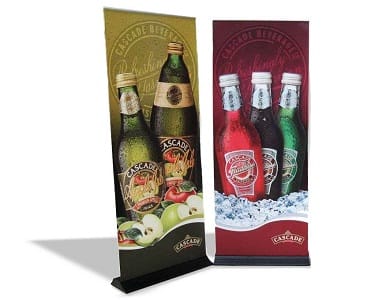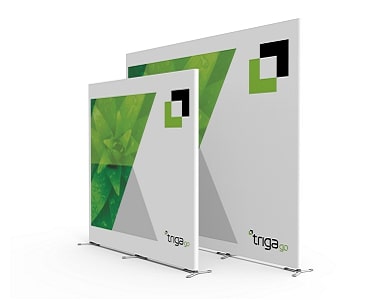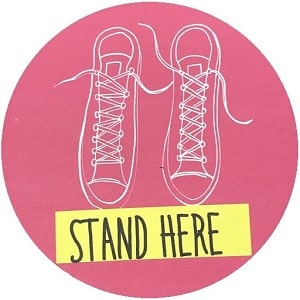
A research sponsored by Lynch Exhibits and In4med found that 98% of exhibitors collect leads at trade shows, but less than 70% have any strategic plan or process in place for how those leads are followed up after the show.
In this post, we’ll cover:
- Three benefits of having a clearly defined post-show strategy
- The #1 biggest driver of post-show strategy success
- How to create a well-defined post-show strategy
- Five tips to improve your post-show strategy
Three benefits of having a clearly defined post-show strategy
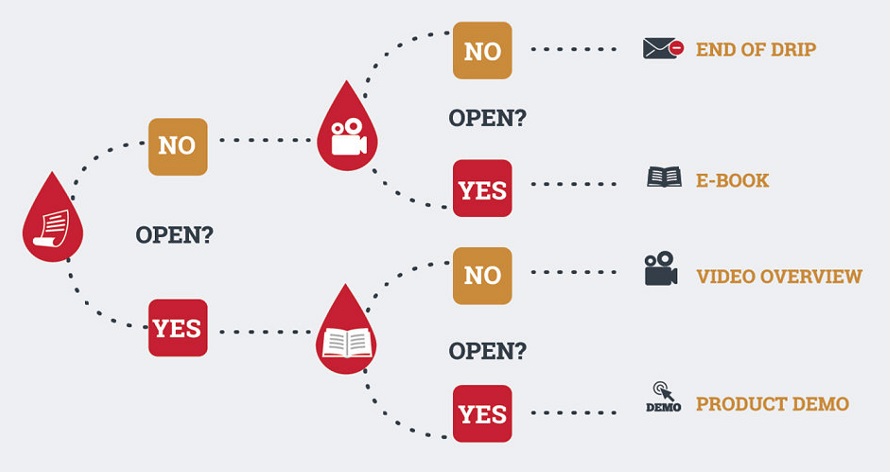
1. Everyone knows who is responsible for what
For example, in a survey conducted by Exhibitor Magazine, 42% of respondents indicated that marketing, as opposed to sales, is responsible for that initial post-show follow-up.
If marketing thinks sales is the one who should be following up and sales think marketing should be following up, there is a very high chance that a lot of leads are either not followed up on or receive two follow-ups from the same company.
By having a clearly defined post-show strategy, it reduces the possibility of this happening.
2. Training new sales reps becomes much easier
Another benefit of having a clearly defined follow-up strategy is it makes it easier to train the new sales rep and bring him up to speed on what the company’s sales process is like.
“Here is our sales process, follow it.”
3. No more “What do I do with these business cards”
Most importantly, it reduces the excuse of “What do I do with these business cards?” and this is common for the newest sales guy with little to no prior trade show experience.
The #1 biggest driver of post-show strategy success
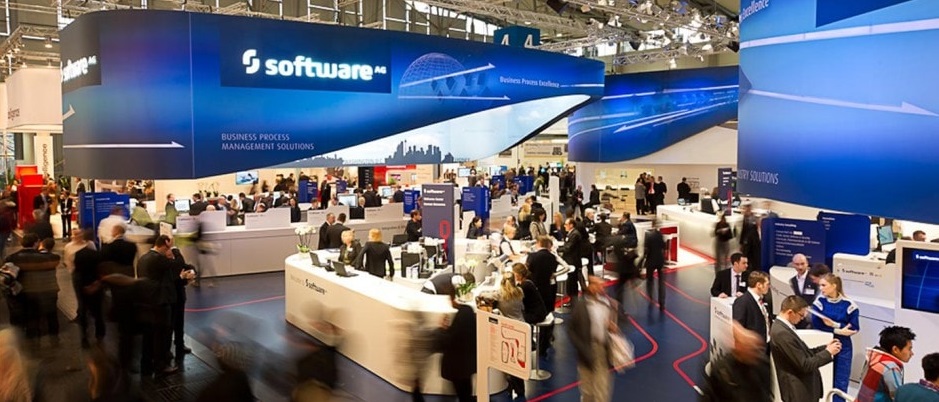
According to Exhibitor Magazine, the average cost per attendee that engages in a conversation is $276. These attendees who engages in a conversation with your company is essentially a lead. When you are paying close to $280 per lead, that lead better be effectively nurtured and worked on to convert from a lead to a client.
The #1 goal of having a post-show strategy is to turn a lead into a client. The question now is what is your game plan on achieving that?
Lead ———– What’s your strategy? ————> $ Client
Here is what most companies’ post-show strategy looks like:
Send one email to the lead and hope we win the deal. If he/she doesn’t reply, mark as lost.
Lead ————— Send one email ————–> $ Client
- 50% of salespeople give up after the first contact.
- 65% give up after the second contact.
- 80% give up after the third contact.
- 90% give up after the fourth contact.
- After the fifth contact, you are most likely the last man standing and the only one still at the top of your prospect’s mind.
An experienced sales rep know most of the time cold prospects don’t pick up a call on their first try. In fact, the probability of you making contact in the first attempt is 48%. But here is what separates the beginners from the pros, on the 3rd attempt the probability of you making contact shoots up to 81% and 93% on the 6th attempt.
- The beginners say “If they’re really interested, they would have answered the first time or would have called me back.”
- The veterans say “The probability of making contact in the first attempt is less than 50%. The more I follow up, the higher likelihood of making contact increases.”
Of course, this doesn’t mean you should follow up six times within one week.

Here is where most sales reps fall off.
The more calls they make, the probability of them making the next call drops when they should actually be doing the opposite.
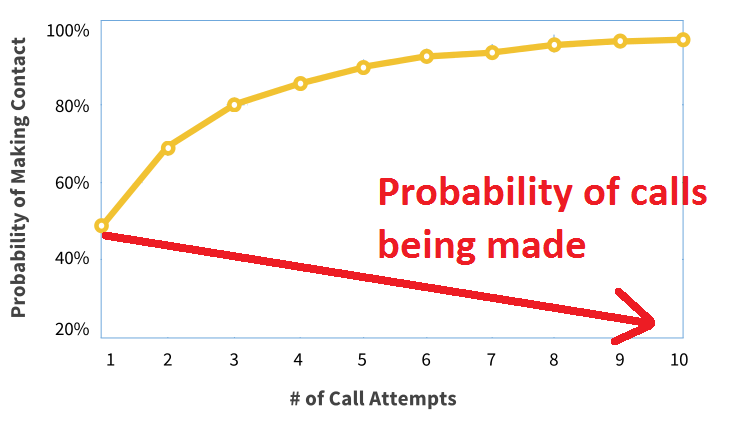
The good news is that most sales reps give up after the first attempt. This gives you a huge advantage on winning the deal. Because when everyone stops making contact and you are the only one left, this greatly increases your likelihood of closing the deal.
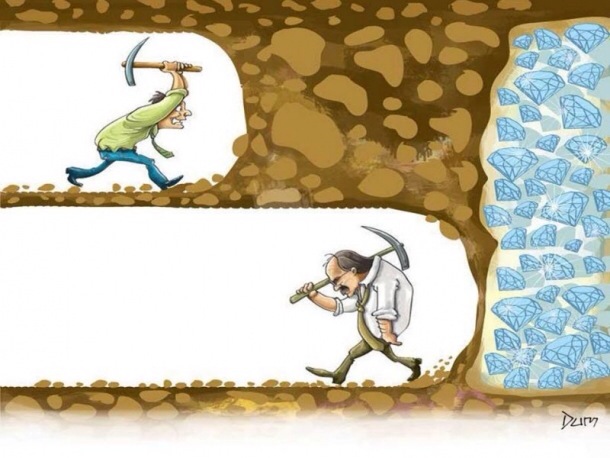
Two good follow up resources
- Three sales follow-up strategies to replace “touching base”
- Perfecting the sales follow-up: How to win deals without being annoying
How to create a well-defined post-show strategy

There are hundreds of different approaches to creating a post-show strategy. Personally, I like to take the question-based approach. This approach creates a strategy based on answering a series of questions. A question-based approach leaves no stone unturned. The more questions you ask, the more comprehensive your post-show strategy is.
Here are some of the questions (with example answers) you and your team need to answer to create a well-defined post-show strategy
1. Do you have a CRM in place to measure all the leads’ activity?
We are using HubSpot CRM.
2. How are you going to import leads into your CRM? Is the sales rep going to enter leads into the CRM manually or is the marketing team going to import them?
Sales reps are going to enter leads manually during the trade show.
3. When are you going to start the follow-up process? 24 hours after the show?
Start follow-up process two days after the show.
4. How long is your average sales cycle?
Our average sales cycle is 5 weeks. Hence, we will be in contact with the client for 5 weeks. After 5 weeks, if there’s no possibility of a deal, we mark the client as lost.
5. How many times are you going to follow up if there’s no reply?
We will follow up 5 times with one week intervals in between each contact if there’s no reply.
6. What is the outcome you want from each email or phone call? Schedule a meeting, download a case study?
The goal here is to schedule a meeting with the client. We also want the client to read three case studies of similar clients because we believe this has increased our close rate success.
7. How are you going to measure your results? Leads to sales conversion rate, sales from trade show leads, ROI, etc.
We will use our CRM to measure how many trade show leads convert into clients and how much sales did we generate from them.
How Salesfusion create their trade show follow up process
Here are the questions Salesfusion asked themselves to create their trade show follow up strategy:
- When does the process take place?
- What is the communication plan during and after the event?
- Is there a follow-up call to action?
- Are you going to send emails out to the people we met at the end of each day of the event?
- If we decided in the pre-event meetings that an email will go to all new leads at the end of each day, then this process will kick off after the first day of a multi-day show. If the first email that goes to trade show leads is the day after the last day of the event, the upload process below can be completed the day following the event.
- When you upload a lead to your MAP, how will you score it?
- Will it become an SQL automatically (to be followed up with by sales) or will you let it work its way up to the SQL threshold through nurture?
- Naturally, Salesfusion is our MAP so we use the Salesfusion Event Module to manage our event leads. If we determine the leads from the event are sales-ready enough that they should be scored to the SQL level, then we ensure they are pushed into our CRM right away to be followed up by our Sales Development Rep (SDR).
- Will it start as an MQL that still needs to work its way to SQL status by engaging in the additional activity?
- This activity would be the call to action following the event (often a webinar or email download) and subsequent nurture campaign. This may vary event by event but should be decided in pre-event planning meetings.
You can more about their follow-up process here: https://www.salesfusion.com/resource/the-trade-show-follow-up-process/
Five tips to improve your post-show strategy success
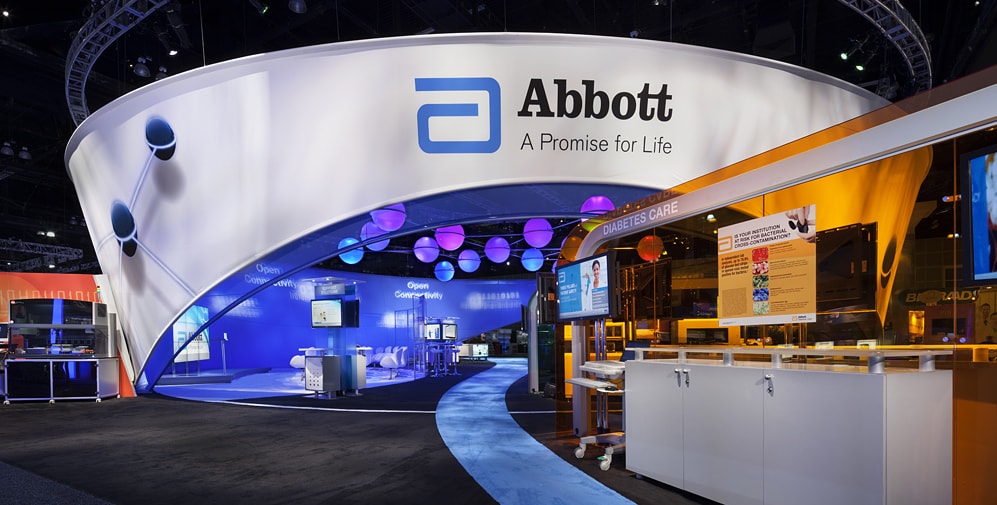
Tip 1: 35-50% of sales go to the vendor that responds first
The early bird gets the worm. Plus, a prompt, well-written, personalised email will always make a better first impression than a late one.
One way to lose a deal is to always respond late. The clients will think if you can’t even respond to an email on-time, how can he/she trust that you can deliver the goods on-time?
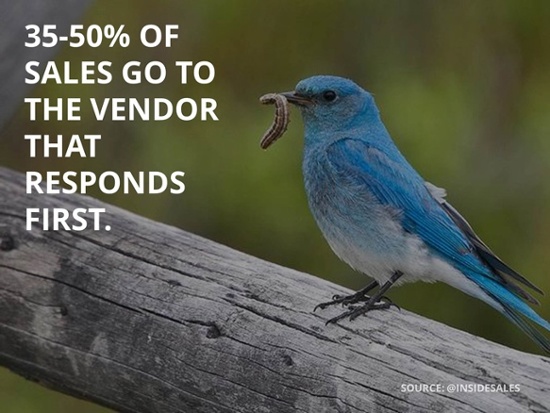
A similar study of more than 2,200 companies found sales reps who attempted to reach leads within an hour were 7x more likely to reach a decision maker compared to those who waited even sixty minutes.
Tip 2: Use an image of your booth picture as a reminder
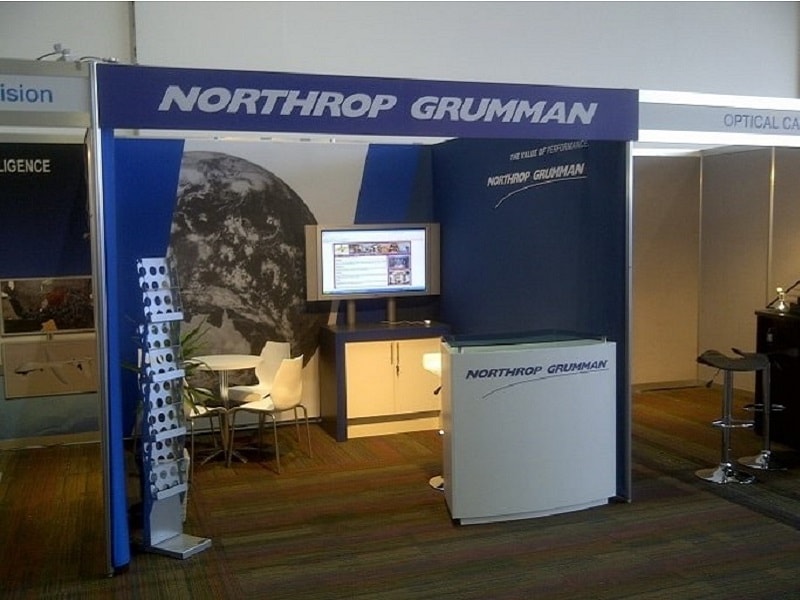
During the show, your prospect will have visited hundreds of booths and unless you have the flashiest booth in the show, he/she will most likely not recall you and your brand.
Adding a picture of your booth in your emails is one of the most effective ways to refresh your prospect’s mind.
A quick tip: You don’t want to be attaching a 5MB image. Reduce the size of your image to ensure your image loads quickly when your prospect opens your email. A tool like Optimizilla helps reduce the size of your image to ensure it loads fast.
Tip 3: Talk less, listen more
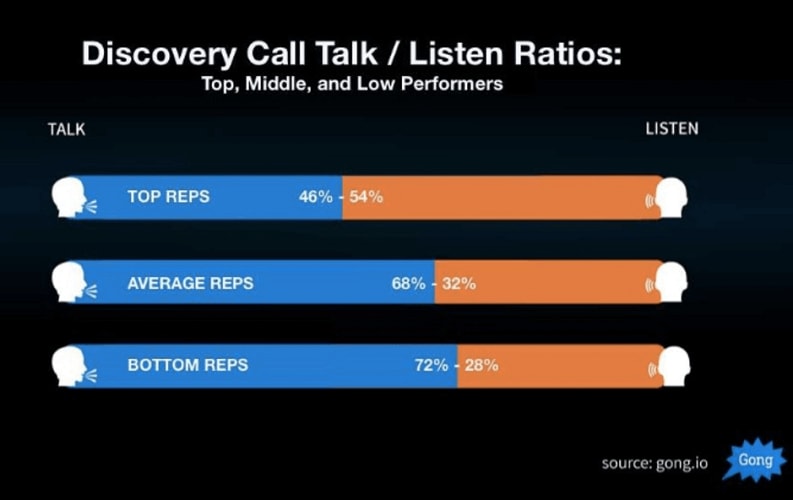
According to an analysis of over 500,000 calls by Gong.io, they found a distinct correlation between how much a sales rep talks in ratio to how much he/she listens.
The highest performing sales reps talk less than the worst performing sales reps and the highest performing sales reps listen more than the worst performing sales reps.
Tip 4: Talking about the weather doesn’t win you deals

The analysis also found that discussing problems increases close rates.
The ideal number of problems to discuss is 3 to 4. After the fourth problem, the success rate of closing the deal decreases albeit still higher than discussing 1 or 2 problems.
Tip 5: Use the right words to improve your close rate
The data science team at Gong.io also found certain words and phrases that hurt sales close rates.
- “Let me show you how”: Drops close rates by 13% when used more than four times on a call regardless of where the prospect is in the sales cycle.
- “We provide”: Drops close rates by 22% when used more than four times on a call. One of the reasons for this is prospects see this as an incoming pitch which results in a resistance between what you are saying and the prospect’s brain.
- “Discount”: Drops close rates by 17%.
- “Contract”: Drops close rates by 7%.
- Your company’s name: Drops close rates by 14% when used four times in a call. When used six or more times, close rates drop by 19%.
You can read the full post here: https://www.gong.io/blog/worst-words-to-use-on-sales-calls/
Summary
- What is your post-show strategy?
- The more call attempts you make, the more likely you are to reach the contact
- 35-50% of sales go to the vendor that responds first
- Attach an image of your booth as a reminder
- Talk less, listen more
- Talking about the weather doesn’t win you deals
- Using the right words can improve your close rates
